Fine artist and educator Heather Green, has teamed up with herpetologist and geneticist, Taylor Edwards, for the 6&6 Collaboration. Forged by the Next Generation Sonoran Desert Researchers network (N-Gen, www.nextgensd.com), 6&6 is a collaboration between artists and scientists to explore the patterns and processes of the Sonoran Desert and Gulf of California. Green and Edwards started the collaboration from scratch –with lots of ideas and concepts, but no tangible project in mind. Geographically, they narrowed in on Bahía La Cholla, an area they are both familiar with and in which Green has worked extensively. “We went about a year ago down to Cholla Bay along the Gulf of California and examined all of the different biomes that comprise the bay. We were sort of thinking that we might get into something marine.”
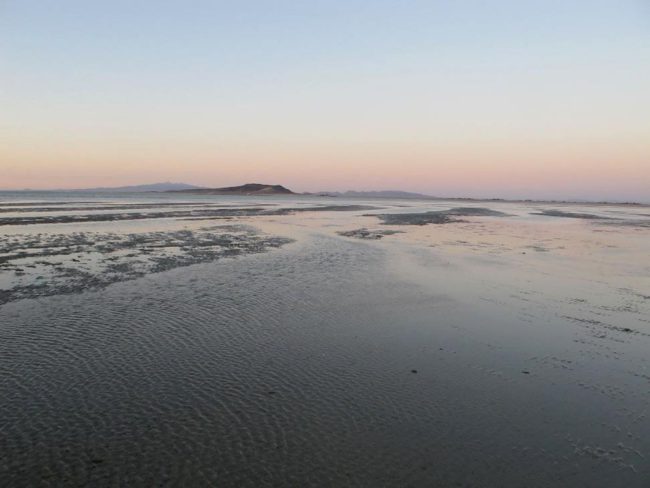
As is often the case, nature had other plans. During that same field visit as they hiked along the periphery of a small mountain Edwards and Green spotted some chuckwalla (a large lizard primarily found in the southwestern United States and northern Mexico). Despite years exploring and working in the region, Green had never seen a live chuckwalla in the area, only skeletal remains: “I’ve always had an interest in trying to find a chuckwalla, and never in all my years of going down had I ever seen one before.” Edwards was similarly surprised by the siting: “I was just as taken by seeing these chuckwallas there, because I didn’t actually expect them to be there in such an isolated area.” It was an encounter too auspicious to ignore. Previous plans were waylaid as Green and Edwards struck out to follow a new path, which they happily admit continues to be dictated by the whim of the chuckwalla. Edwards explains, “I look at it as the next contributor to the project itself, besides Heather and I, is going to be the chuckwallas. So when you’re in the field with them, I think they will communicate to us –either by showing themselves or not, or whatever they’re doing– what direction we go next.”

The chuckwalla, an evasive large lizard, might seem like an odd subject to focus on, but for Edwards and Green the chuckwallas of La Cholla have a story worth telling. Green explains, “It kind of is an interesting situation where this small little mountain range is completely surrounded by development. And so this chuckwalla is –we’re assuming there’s more than one, but I’m saying it singularly– has no chance of leaving. He’s isolated there.” The spot is so isolated by both natural and man-made barriers, Edwards was surprised to find any chuckwalla in the area. Yet there they were. On top of their unexpected presence, Edwards also noted that the chuckwalla looked a little different. Isolation is a common driver of speciation, consider for example the unique fauna found on islands like the Galapagos, and they wondered to what extent these chuckwallas had been isolated from other populations. Edward’s primary work has focused on using DNA-analysis to assess how the processes of time, climate, and adaptation have shaped the evolution the desert tortoise, Gopherus morafkai, and he was excited for the opportunity to ask similar questions about the chuckwallas.
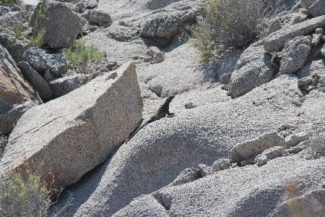
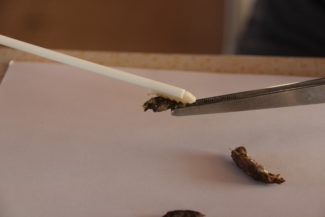
DNA-analysis requires DNA samples. How do you collect DNA samples from a rarely spotted lizard without disturbing the animals? The answer is in another kind of path the chuckwallas leave behind –“by actually collecting lots of scat and sampling them.” Which is exactly what Green and Edwards did. Edwards “brought the scat back to the lab and was able to do some DNA-analysis with them.” Ultimately, Green reports, “Taylor was able to get some successful DNA-extraction and discovered that, it is a unique critter, but he’s not quite unique enough to be considered a sub-species. The DNA is a little bit different than the common chuckwalla in the Sonoran Desert, and his closest relatives are from Caborca, from what Taylor could tell.”

The DNA analysis provides some insight on the chuckwalla’s past isolation, but what does the future hold? Edwards explains that an important aspect of DNA analysis is gene-flow, the transfer of genes from one population to another. For the chuckwallas of La Cholla “We do know that there’s probably several little isolated populations around that have the potential to exchange individuals such as in Peñasco. Relative to La Cholla they should be some of your closest areas. Now they’re fragmented, like a lot of the landscape throughout the Sonoran Desert. And there’s long term consequences of that. As Heather said, they can become a sub-species. But when the populations get so small the unfortunate, more likely, scenario is extirpation –or extinction of that small population–, because they don’t have the ability to have gene-flow anymore.” It is an unfortunately common tale in which sprawling human development cuts through habitat and fragments populations.
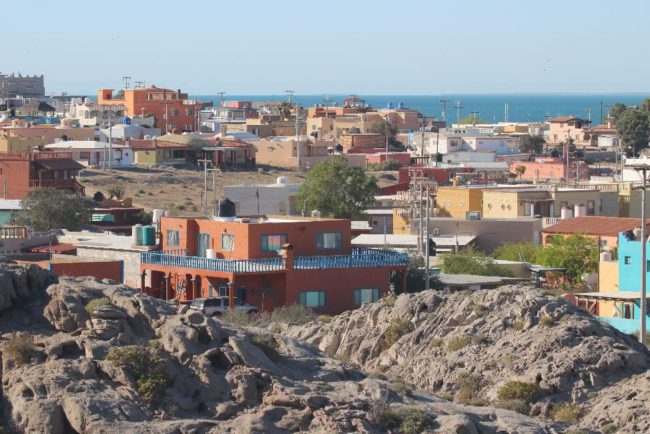
For Edwards, “What is different is of course exploring it through art and not just data.” By combining the DNA-analysis data and Edwards’s expertise of the chuckwalla, with Green’s expertise of the area and the history of the mountain where the chuckwallas live, they plan “to create a bigger picture of how this mountain range for the chuckwalla is at risk of being forgotten and possibly destroyed.” What form that takes is still to be determined. From the creative side, Green says, “The process of coming up with the idea and wanting it to be a substantial project has been challenging. I have high expectations and I don’t want it to just be an obvious, literal thing. I want it to be expansive.” Additionally, for Green, who has worked in collaboration with scientists before, “the thing that’s been different with this project is that we’re generating the data as we go. And so there’s not as much of it to work with in the beginning.” Green continues to explain that while data is still coming in, their field visits have provided ample inspiration: “In terms of drawing inspiration from Taylor’s findings, our conversations, and walks around when we went to La Cholla together, that’s been amazing. Not indifferent from my other works but in a way better, because we’re in the field together, working.”

At the end of March, Green and Edwards returned to La Cholla together. They went with plans to explore the mountain and look for chuckwalla or any signs of their activity. Green explained they would also be “looking at the plants and checking out everything we can to help tell our story. We’re also just going with an open-mind and willingness to talk about everything and to continue to develop the ideas and the direction we decide to take it. Even though we have a direction we still have a lot to glean from conversations with each other.”
As their conversations and encounters with the chuckwalla continue to shape their creative product, Edwards reflects on how unique the process has been for him:
“I think because it is a creative process, and for me as a scientist as opposed to goal-directed or grant-initiated style of project it’s been really nice that we can change direction as we go along. That doesn’t always happen when you have a funding source to complete, a specific project, or an endpoint that you’re going for. We do have an endpoint of creating something, but the questions we’re asking are very malleable to new questions we start to ask. I think that’s something all scientists desire, but don’t always get to do… I wish I had more time to do projects of this nature.”
Green builds on this to explain how, for her, the collaboration has provided room for “these unexpected, magical things… that may have nothing to do directly with the research” to happen. As an example, “We went tidepooling at night, and it was kind of foggy with stars up above, and we had headlamps. We were looking at all this cool stuff underwater. And sometimes those stories don’t get recorded, but in some ways that was one of my favorite parts of the whole trip.” Edwards agrees, “Those moments might not be reflected directly in the art, and the project itself, but they’re inspiring for the entire process.”
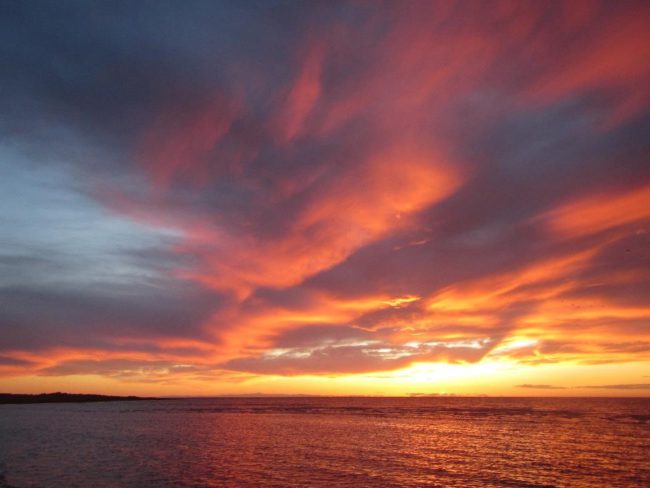
This project is part of the 6&6 collaboration introduced at the end of April. You can find out more about 6&6 here. The MAHB will be featuring additional scientist-artist partnerships from the collaboration in the coming weeks.
The above post is through the MAHB’s Arts Community space –an open space for MAHB members to share, discuss, and connect with artwork processes and products pushing for change. Please visit the MAHB Arts Community to share and reflect on how art can promote critical changes in behavior and systems and contact Erika with any questions or suggestions you have regarding the space.
MAHB Blog: https://mahb.stanford.edu/creative-expressions/implications-isolation/
The views and opinions expressed through the MAHB Website are those of the contributing authors and do not necessarily reflect an official position of the MAHB. The MAHB aims to share a range of perspectives and welcomes the discussions that they prompt.
